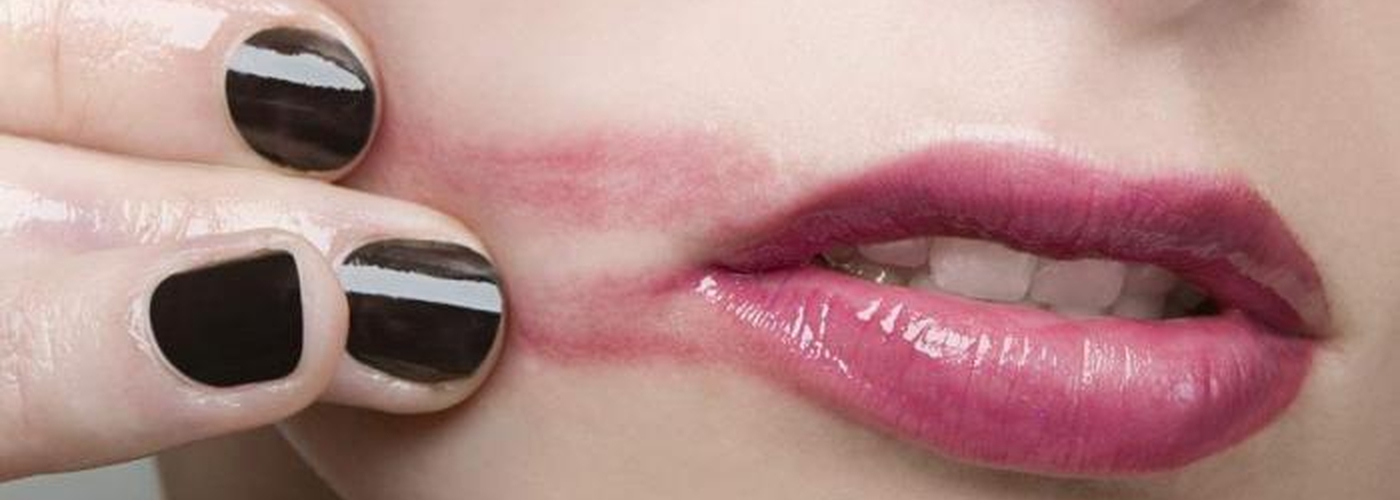Cervical cancer is the most common cancer in women under 35, so why are women so reluctant to have a screening?
A flawless face, powdered nose and a swipe of vibrant red lipstick smeared across your cheek - you’d be forgiven for thinking this is another one of those Instagram fads. Yet this is not a crazed beauty trend forged in the corners of the internet. This is a reminder: smear tests save lives so don’t ignore yours.
There are some unpleasant rituals that women are more than happy to commit to – like pouring hot wax on our bodies to rip out unwanted hair or undergoing minor surgery on your lunch break but a recent survey by Jo’s Cervical Cancer Trust revealed that a third of British women are putting off having their smear test because the procedure is considered uncomfortable.
Cervical cancer is the most common cancer in women under 35
A total of 220,000 British women are diagnosed with cervical abnormalities each year, and cervical smears are crucial for early treatment – the procedure, though sometimes uncomfortable, prevents up to 75% of cervical cancers. Cervical cancer is the most common cancer in women under 35, yet almost two-thirds of those surveyed weren't aware they're most at risk.
I am amongst those two thirds; I waited eighteen months after my 25th birthday before even considering getting my first smear. I was too busy, it sounded like it would be painful and surely I’m too young to get cancer anyway? It was only when I confessed my delay to a friend – the daughter of a gynaecologist - that I realised how naïve I was being. “It’s really important. Book your test,” she cautioned me, before explaining that the procedure really isn’t as bad as everyone makes out.
“Not as bad as it seems” – what happens in a smear test?
- Screenings take just five minutes and are carried out by a nurse or doctor at your local GP.
- You’ll be asked to get undressed from the waist-down before lying on a bench.
- The doctor or nurse will gently put an instrument called a speculum into your vagina. This holds the walls of the vagina open so the cervix can be seen.
- A small soft brush will be used to gently collect some cells from the surface of your cervix.
- Some women find the procedure a bit uncomfortable or embarrassing, but for most women it's not painful.
- The cell sample is then sent off to a laboratory for analysis and you should receive the result within two weeks.
- If you’re over 25 and living in the UK, the NHS advises you have regular smear tests every three years, or every five years for women over 49.
The procedure was exactly that – not that bad. Whilst cervical screenings are never going to be something you look forward to, the procedure was quick and painless, making me question why I’d been putting it off for so long. Like the one-in-three women under 29 who don’t attend their screenings when invited, I had considered the procedure too unpleasant to put myself through.
Flashback to the early noughties and attitudes towards cervical screenings were largely different, thanks to bubbly reality TV star Jade Goody. The ex-Big Brother was just 27-years-old when she died from cervical cancer, deteriorating in the public eye as she broadcast the final months of her battle with cancer. However, though ‘the Jade Goody effect’ created a surge in cervical screenings – nearly half a million more women had the test following Goody’s death in 2009 – the number of women having screenings is now at a 20-year low.
Cervical screenings can prevent 75% of cervical cancers
5,000 women’s lives are saved by cervical screening in the UK every year, so why are women so reluctant to get the test done?
According to Jo’s Cervical Cancer Trust, it’s because they’re embarrassed. The survey of 2000 women found that young women are embarrassed to attend smear tests because of their body shape (35%), the appearance of their vulva (34%) and concerns over smell (38%). A third said they wouldn't go to their appointment if they hadn't waxed or shaved their bikini area.
At my screening, I also felt embarrassed. Was the nurse going to notice my ugly ‘laundry day’ pants scrunched up in my hand? My beetroot face as I realised that in my rush this morning I had completely forgotten to shave? And was she going to think I looked ‘normal’ (whatever the hell that is)? My anxiety was, of course, misplaced. The nurse didn’t care that at the age of 26 I was still wearing unicorn socks, nor did she comment when her arm brushed my four-week old hairy legs and she certainly didn’t shriek at the sight of me. Because the reality is, this is an essential procedure that every woman must go through, unicorn socks or not.
The #smearforsmear campaign hopes to highlight exactly that. Though a selfie of smudged makeup may seem trivial, the campaign shows how all women, regardless of background or ethnicity, must take responsibility and have their smear test.
Though a five-minute intimate examination may be embarrassing, the discomfort is nothing compared to a life with cancer.
Girls, it’s time to overcome the humiliation, for health’s sake.
For more information about what happens in a cervical screening, visit the NHS website.












